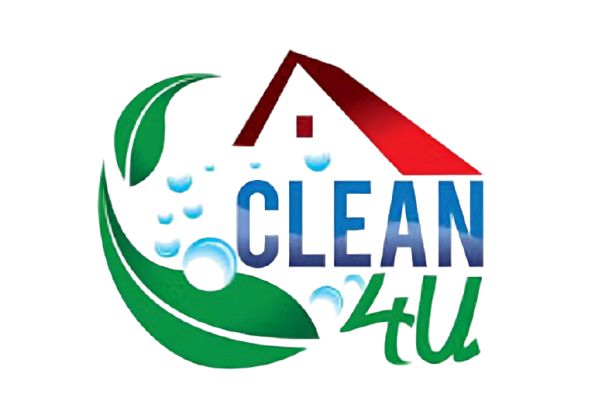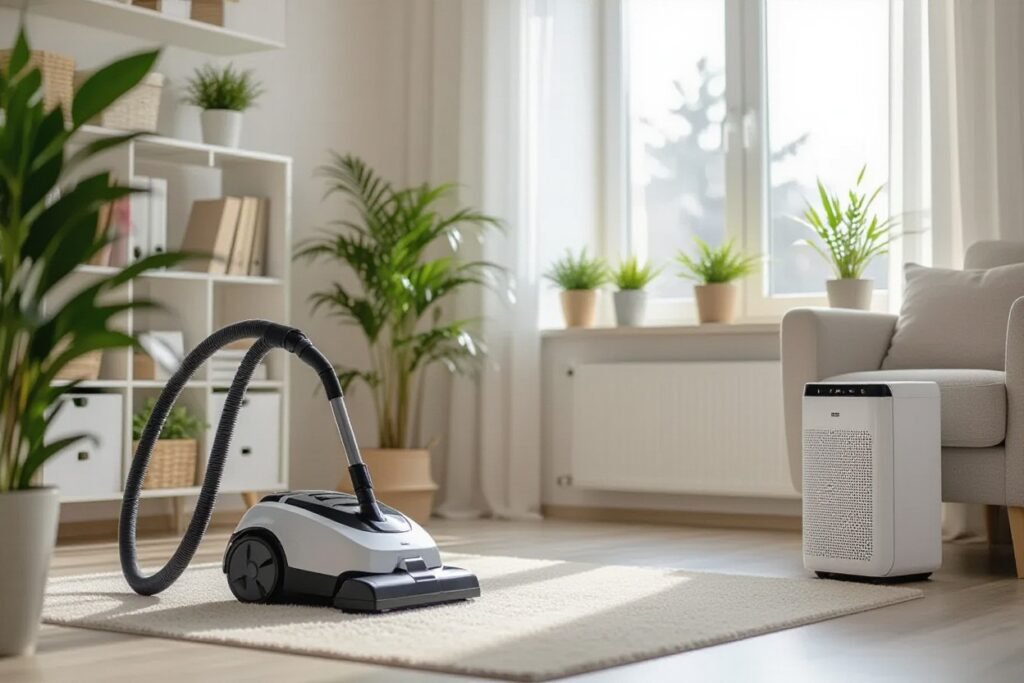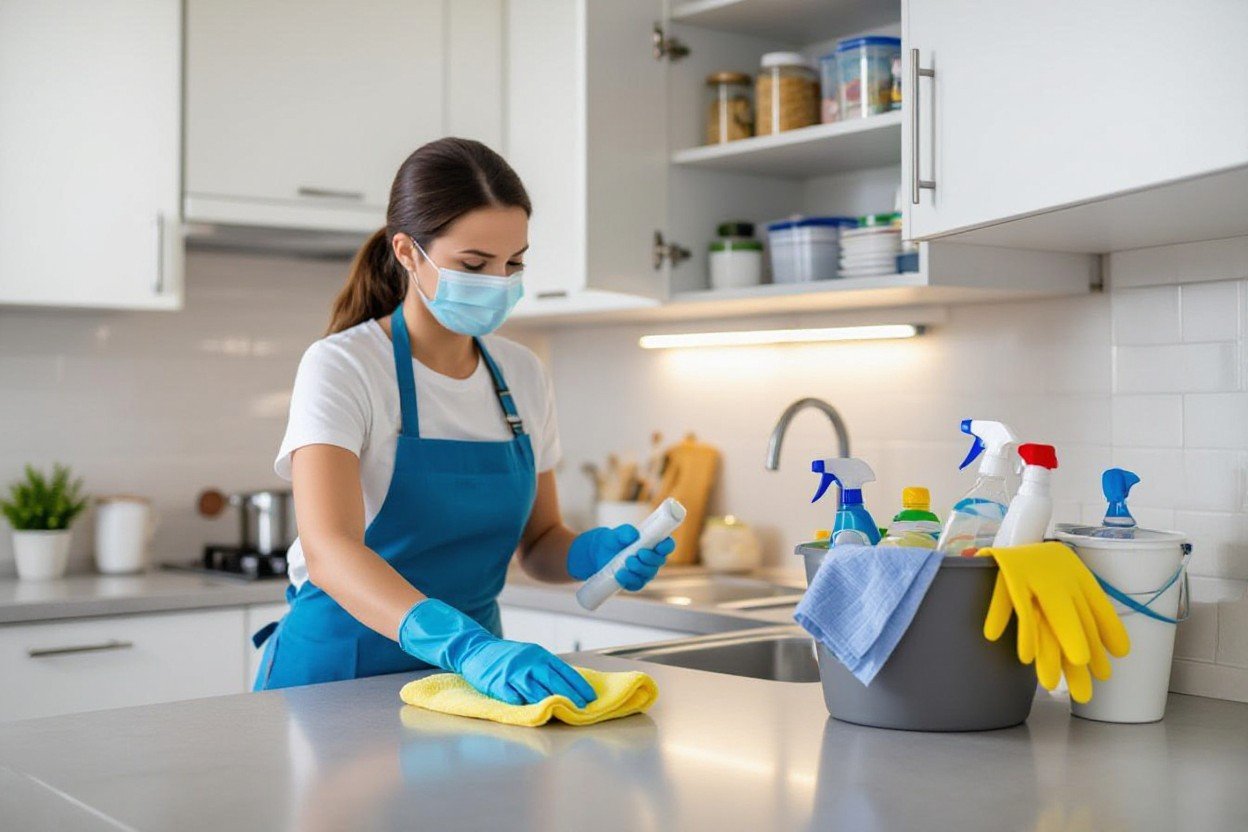Cleaning your home thoroughly will help you target hidden hotspots where dust mites, pet dander, and mold spores trigger symptoms; this how-to guide shows you focused techniques and tools so you can reduce exposures, protect vulnerable family members, and breathe easier with fewer sneezes, less congestion, and visibly cleaner living spaces.
Understanding Allergens
Allergens in your home are often microscopic but highly active: dust mites can number in the tens to hundreds of thousands per gram of dust, thriving where humidity sits above roughly 50% and where dead skin accumulates. You’ll find them in mattresses, upholstered furniture, and thick carpets; their fecal particles are small enough to become airborne during normal activity and lodge deep in your airways. Mold spores behave similarly in damp areas—bathrooms, basements, and behind walls—releasing thousands of spores per cubic meter during growth cycles that you can inhale without noticing.
Everyday movements resuspend settled allergens, so a single walk across the living room or making the bed can spike airborne counts. Particle size matters: HEPA-rated filters capture 99.97% of particles ≥0.3 microns, which includes most pet dander fragments and many mold and dust-mite particles, while larger pollen grains tend to settle quickly but can still accumulate on surfaces and be transferred indoors. You can use this knowledge to target cleaning and filtration where it will have the biggest impact on your exposure.
Common Indoor Allergens
Dust mites, pet dander, mold spores, and cockroach allergens are the most frequent culprits inside homes. Dust mites feed on shed skin and concentrate in bedding and soft furnishings; pet dander consists of tiny skin and hair fragments that cling to fabrics and walls and can remain airborne for long periods. Mold prefers damp, poorly ventilated spots—showers, window sills, and basements—and releases spores that can trigger both upper- and lower-airway responses.
Less obvious but still significant are cockroach proteins (common in kitchens and older buildings), rodent droppings in attics or garages, and tracked-in pollen during peak seasons. You’re more likely to see severe reactions when multiple allergen types coexist: for example, a household with pets and high indoor humidity often has elevated dust-mite and dander loads simultaneously, which amplifies symptoms for sensitive individuals.
How Allergens Affect Your Health
Exposure to these particles triggers immune responses in susceptible people via IgE-mediated pathways, releasing histamine and inflammatory mediators that cause sneezing, nasal congestion, itchy eyes, and throat irritation. Allergic rhinitis affects an estimated 10–30% of people worldwide, and allergic triggers are linked to a high proportion of asthma cases—studies show up to 80% of children and a substantial share of adults with asthma have allergy-related exacerbations. When allergens reach the lower airways, they can provoke bronchoconstriction and more severe asthma symptoms.
Chronic exposure often means persistently poor sleep, reduced daytime focus, and increased reliance on antihistamines or inhaled medications. Clinical interventions that lower indoor allergen levels have been associated with reduced symptom scores and decreased medication use in multiple trials, so tackling the source in your home is a measurable way to improve health outcomes rather than only treating symptoms.
Practical measures you can apply immediately include keeping indoor relative humidity below about 50%, washing bedding weekly in water at least 130°F (54°C) to kill dust mites, using vacuum cleaners with HEPA filtration, and upgrading HVAC filters to MERV 11–13 where compatible with your system. These targeted steps reduce allergen loads and can cut the frequency and severity of attacks, helping you regain control of your home environment.
How to Identify Allergen Hotspots
Start by systematically inspecting rooms where moisture, pets, or heavy fabrics converge: bedrooms, living rooms, bathrooms, kitchens, basements and HVAC returns. Use a flashlight to look into dark corners, a moisture meter for damp surfaces, and a handheld vacuum or tape to lift visible dust from upholstery and vents. Note that dust mites thrive once relative humidity exceeds about 50%, and that mold colonies can establish on damp surfaces left wet for 24–48 hours, so prioritize areas that frequently get wet or stay humid.
Track your symptoms and household activity for 1–2 weeks to correlate exposures with flare-ups: log where you spend time, when symptoms spike, and cleaning events (for example, sneezing that worsens within 30–60 minutes of entering the living room points to airborne particles there). If you want objective data, use low-cost home allergen test kits or professional dust analysis — kits typically run about $25–$150 and lab testing can quantify specific allergens like Der p 1 or Fel d 1 to guide targeted cleaning.
High-Risk Areas in Your Home
Carpets, area rugs and upholstered furniture collect skin flakes, pet dander and dust mite feces — often hidden deep in fibers where regular vacuuming can’t reach. Mattresses and pillows are classic reservoirs; a typical mattress can host tens of thousands to millions of dust mites over years of use, so focus on encasements and frequent washing of bedding. Curtains, stuffed toys and fabric-covered headboards also trap allergens and should be laundered or frozen/isolated periodically.
Bathrooms, kitchens and basements are top mold hotspots because of intermittent moisture: grout lines, shower seals, under-sink cabinets and around washing machines are common sites for fungal growth. HVAC systems, dryer vents and attic/crawl spaces can spread dust and mold spores throughout the house — inspect return vents and ductwork for visible debris and black staining, and check pet-frequent zones (beds, sofas, entryways) where Fel d 1 and Can f 1 allergen levels concentrate.
Signs of Allergen Presence
Visible clues are straightforward: black, green or white fuzzy spots indicate mold; persistent powdery dust layers, crumbly pillow fillings, or clumps of pet hair signal accumulated allergens. You’ll also see behavioral or health signals: night-time congestion, waking with itchy eyes or increased asthma symptoms at home, and family members who improve noticeably when away from the house are strong practical indicators of indoor allergen loads.
Odors and rapid re-soiling are further hints — a musty smell in closets, basements or behind appliances often means mold growth, while greasy film on kitchen cabinets and sticky residue on window sills can trap dust and support microbial growth. If symptoms flare after specific activities (making the bed, petting the dog, turning on the furnace) that activity points to the nearby hotspot.
To confirm, perform quick tests: run a HEPA air purifier in the room for 24–48 hours and note symptom change, use a humidity meter to check for readings above 50%, or collect a dust sample for lab analysis. These steps help you move from suspicion to evidence so you can target the most problematic areas with deep cleaning and mitigation measures.
Essential Deep Cleaning Tools
Must-Have Cleaning Supplies
Load your cleaning kit with products that tackle allergens at their source: allergen-proof mattress and pillow encasements (look for pore sizes under 10 microns), a hypoallergenic laundry detergent for washing bedding at least weekly in water heated to 60°C (140°F), and enzyme-based cleaners to break down pet dander and urine proteins on carpets and upholstery. You should also keep microfiber cloths and disposable wipes on hand—microfiber traps dust rather than just spreading it—and a fragrance-free, non-irritating surface cleaner for hard floors and counters.
Include protective items that reduce your exposure while you clean: N95 masks or better for heavy dusting, nitrile gloves, and eye protection. For mold-prone areas, have household bleach available diluted to about 1:10 (bleach:water) for spot treatment, and never mix bleach with ammonia or other cleaners because that creates toxic gases. Finally, choose products labeled for allergen control and avoid fabric softeners that can leave residues which trap particles.
Effective Cleaning Equipment
Pick a vacuum with a true HEPA filter and a sealed system—HEPA captures about 99.97% of particles ≥0.3 microns—and use it on carpets, rugs, and upholstery at least once weekly (twice weekly in high-traffic or pet areas). Fit your HVAC with a MERV 13 or higher filter if the system supports it to reduce pollen, dust mite particles, and pet dander passing through vents. Portable air purifiers with true HEPA are also effective in bedrooms and living rooms; look for coverage ratings that match the square footage of the room.
For deep extraction, use a hot-water carpet cleaner or a steam cleaner capable of reaching temperatures above 130°F, which helps kill dust mites and reduce mold viability when used correctly; consider professional hot-water extraction every 6–12 months for heavily soiled carpets. You should also add a dehumidifier to keep relative humidity below 50%, since lower humidity markedly reduces dust mite populations and mold growth.
When deciding on equipment, prioritize maintenance and fit: replace vacuum and purifier HEPA filters according to manufacturer guidelines (typically every 6–12 months), clean brush rolls to prevent dander buildup, and use the upholstery and crevice tools to reach allergen hotspots like baseboards, mattress seams, and behind appliances. For air purifiers, aim for models that deliver multiple air changes per hour in the target room and check the CADR or manufacturer room-size recommendation to ensure adequate performance.
Step-by-Step Deep Cleaning Process
Deep Cleaning Steps & Frequency
| Area | Actions & Frequency |
|---|---|
| Carpets & Rugs | Declutter, vacuum slowly with a HEPA-filter vacuum (edges and under furniture) at least weekly; high-traffic or pet homes: 2–3×/week. Deep clean with hot-water extraction every 6–12 months or sooner for heavy allergen loads; avoid shampoo methods that leave residue. |
| Upholstered Furniture | Vacuum cushions and crevices weekly using brush attachments; launder removable covers in water ≥130°F (54°C) monthly if possible. Schedule professional upholstery cleaning every 12 months or 6 months with pets. |
| Bedding | Wash sheets, pillowcases, and duvet covers weekly in ≥130°F water; use allergen-proof encasements on mattresses and pillows; replace pillows every 2 years if allergy-prone. |
| Bathrooms | Scrub grout and shower seals weekly; dry surfaces within 24 hours to prevent mold; use a dehumidifier or exhaust fan to keep relative humidity below 50%. |
| Kitchen | Wipe down cabinets and countertops daily; clean vents and range hood filters monthly; store dry goods in sealed containers to limit mold and pest allergens. |
| Air Ducts & HVAC | Change HVAC filters every 1–3 months with HEPA/High-MERV options when compatible; schedule duct inspection/cleaning if dust buildup or mold is visible (typically every 3–5 years). |
Cleaning Carpets and Rugs
Start by removing loose dirt and debris—vacuum slowly, overlapping passes and using crevice tools around baseboards and furniture legs; that technique extracts deep-set dust that quick passes miss. For allergy-prone households or homes with pets, vacuum 2–3 times per week and use a HEPA-filter vacuum with a sealed system to prevent re-release of particles into the air.
When it’s time for a deep clean, choose hot-water extraction (steam cleaning) performed by a quality machine or professional: aim for rinse temperatures that exceed 130°F (54°C) to denature dust-mite proteins and loosen embedded dander. For area rugs, take reversible or washable pieces outside—beat and sun them for a few hours, then vacuum; for non-washable rugs, professional cleaning every 6–12 months can cut embedded allergen loads substantially while avoiding over-wetting that can lead to mold growth.
Maintaining Upholstered Furniture
Vacuum upholstery weekly with the upholstery brush and use the crevice tool to get between cushions; that routine removes loose dander and dust before it settles deeper. If covers are removable, wash in water at ≥130°F (54°C) monthly—synthetic slipcovers tolerate hot washes better than some delicate fabrics.
Use targeted spot treatments for stains and pet odors—enzyme cleaners work well on organic residues—then air-dry thoroughly to avoid moisture buildup. Leather and vinyl surfaces are easier to keep allergen-free: wipe them down with a damp microfiber and a mild cleaner, and avoid fabric sprays that leave residues you might react to.
For extra protection, install washable slipcovers on frequently used sofas and launder them monthly; sprinkle baking soda on cushions for 30–60 minutes before vacuuming to help loosen odors and dry particulates. If you have heavy pet traffic, combine weekly vacuuming with professional upholstery cleaning every 6–12 months and consider allergen-barrier covers for long-term reduction.
Tips for Reducing Allergens
Target humidity first: keep indoor relative humidity below 50% (ideally 30–50%) by using a dehumidifier or running air conditioning during humid months, because mold spores and dust mites thrive above that range. Prioritize the bedroom—encase your mattress and pillows in allergen-proof mattress encasements, wash bedding weekly at 130°F to kill dust mites, and keep pets out of sleeping areas to cut down on pet dander.
- Swap high-pile carpets for hard floors or low-pile rugs you can wash; focus on carpet shampooing every 6–12 months.
- Use a HEPA air purifier in high-use rooms to capture particles down to 0.3 microns.
- Change HVAC filters at least every 3 months, or every 1–2 months if you have allergies, using HEPA-rated or pleated filters.
Perceiving measurable symptom relief after these targeted swaps and cleaning schedules helps you refine what combination works best for your household.
Daily Cleaning Habits
You should vacuum high-traffic areas 2–3 times per week using a vacuum with HEPA filter and a sealed bag or canister to prevent particle escape; vacuum slowly to maximize pickup. Dust with damp microfiber cloths rather than feather dusters to trap allergens instead of dispersing them, and run a HEPA-equipped air purifier for 6–12 hours on days when pollen counts are high.
- Wash bedding weekly at 130°F to eliminate dust mites.
- Wipe pet sleeping spots daily with a damp cloth to reduce pet dander.
- Keep clutter off floors—store items in sealed bins to prevent dust buildup.
Any simple, repeatable routine you commit to will steadily reduce your home’s allergen load and lower symptom frequency.
Seasonal Deep Cleaning Tips
Plan two major deep-clean sessions per year—spring and fall—to tackle items you skip in daily maintenance: steam-clean or hot-water-extract carpets and upholstery, launder or dry-clean curtains and bed skirts, and inspect attic/basement areas for mold and moisture damage. Replace or professionally clean HVAC components seasonally; for example, have ducts inspected and cleaned every 2–3 years if occupants have allergies, and replace filters more often during high-use periods.
- Steam-clean upholstery and carpets to remove embedded dust mites.
- Clean or replace window screens and wash exterior-entry mats to reduce tracked-in pollen.
- Service HVAC systems and clean air ducts when you detect dust clouds after vents are opened.
Any seasonal deep-clean checklist should prioritize moisture control and HVAC maintenance to prevent allergen regrowth.
When you plan a seasonal deep clean, decide which tasks you can handle and which need professionals—steam extraction often removes >90% of embedded allergens when done correctly, while DIY carpet cleaners remove far less. Use enzyme cleaners on pet stains, launder soft toys every 2–4 weeks in hot water, and treat visible mold with EPA-registered cleaners or consult a remediation specialist for infestations larger than a 3×3-foot area.
- Use a professional-grade steam cleaner or hire pros for carpets.
- Opt for HEPA-filtered vacuums during post-cleaning pickup.
- Install or service a whole-house dehumidifier if basement humidity exceeds 50%.
Any thorough seasonal approach combines professional services and targeted DIY steps to deliver the largest drop in indoor allergen levels.
Factors Contributing to Allergens
Allergen load in your home is driven by a handful of predictable sources: dust mites thriving in warm, humid bedding and carpets; mold colonizing damp grout, basements, and window sills; pet dander dispersing from fur and settling on soft surfaces; and HVAC systems that redistribute particulates through ductwork. For example, dust-mite populations explode above roughly 60–70% relative humidity, and washing bedding in hot water (≥130°F/54°C) weekly reduces mite allergens dramatically. You should treat porous textiles (area rugs, upholstered furniture, curtains) as long-term reservoirs: routine deep cleaning and high-temperature laundering or steam-cleaning every 3–6 months produces measurable reductions in allergen counts.
- Dust Mites
- Mold
- Pet Dander
- HVAC/Dust Re-suspension
- Indoor Humidity
After you map which of these sources are most active in your rooms, prioritize targeted controls like humidity adjustment, stricter pet-area rules, and focused laundering to cut overall exposure.
Humidity and Temperature Control
You can make a big impact by aiming for a steady indoor relative humidity of about 30–50%; that range suppresses mold growth and reduces the reproductive rate of dust mites. Use a reliable hygrometer in the basement, bedrooms, and living room to spot spikes—mold problems commonly appear when RH exceeds 60%, while very low RH (<30%) increases airborne particle suspension and can aggravate nasal irritation. Practical steps include running exhaust fans during showers and cooking, installing a whole-house dehumidifier in damp basements, and closing crawlspace vents when moisture is high.
Humidity & Temperature Guidelines
| Condition | Recommended Range / Action |
|---|---|
| Relative Humidity | Maintain 30–50%; use dehumidifier if >60% |
| Temperature | Keep between 65–72°F (18–22°C) to limit mite proliferation while staying comfortable |
| Monitoring | Place hygrometers in 2–3 key rooms; check weekly and log trends |
| Actions | Run bathroom/kitchen fans, repair leaks, insulate cold surfaces to avoid condensation |
When you pair humidity targets with regular HVAC maintenance—changing filters every 3 months and ensuring condensate drains are clear—you’ll see fewer mold blooms and lower dust-mite counts in soft furnishings. Installing a room-sized HEPA air purifier in a bedroom can further reduce airborne spores and dander while you sleep.
Pet Care and Allergens
If you have animals, reduce allergen spread by combining behavioral and cleaning strategies: bathe or wipe pets weekly (dogs tolerate bathing better than cats), brush them outdoors, and keep pets out of the bedroom to create an allergen-free sleep zone. You should wash pet bedding and soft toys weekly in hot water (≥130°F/54°C) and vacuum floors and upholstery at least twice weekly with a HEPA-equipped vacuum to capture fine dander.
For severe reactions, consider grooming appointments that include allergen-reducing shampoos and professional cleaning of area rugs every 3–6 months; in clinical studies, frequent grooming and environmental controls produced meaningful symptom reductions for many pet-allergic individuals. Use washable barrier covers on your mattress and pillows and vacuum these surfaces with an upholstery tool to limit transfer of Fel d 1 or other major pet allergens.
More targeted steps you can take include using a dedicated lint roller or microfiber cloth to wipe furniture daily, running a bedroom-sized HEPA purifier during sleep, and testing for allergen levels via commercially available kits if symptoms persist despite rigorous cleaning.
To wrap up
Presently you can make your home far less triggering by applying focused deep-clean routines that target carpets, upholstery, bedding, bathrooms, kitchens and air systems: vacuum with a HEPA-filter vacuum, launder bedding in hot water weekly, steam-clean or replace carpets as needed, use a dehumidifier and exhaust fans to limit mold, clean and seal vents and ducts, and groom pets and wash their bedding. Consistent, targeted cleaning reduces dust mite, pet dander and mold reservoirs and lowers the frequency and severity of symptoms you experience.
For step-by-step methods and evidence-based product recommendations to refine your routine, consult Cleaning Tips for Allergy and Asthma Sufferers and consider scheduling periodic professional deep cleans to tackle areas you cannot reach yourself.







